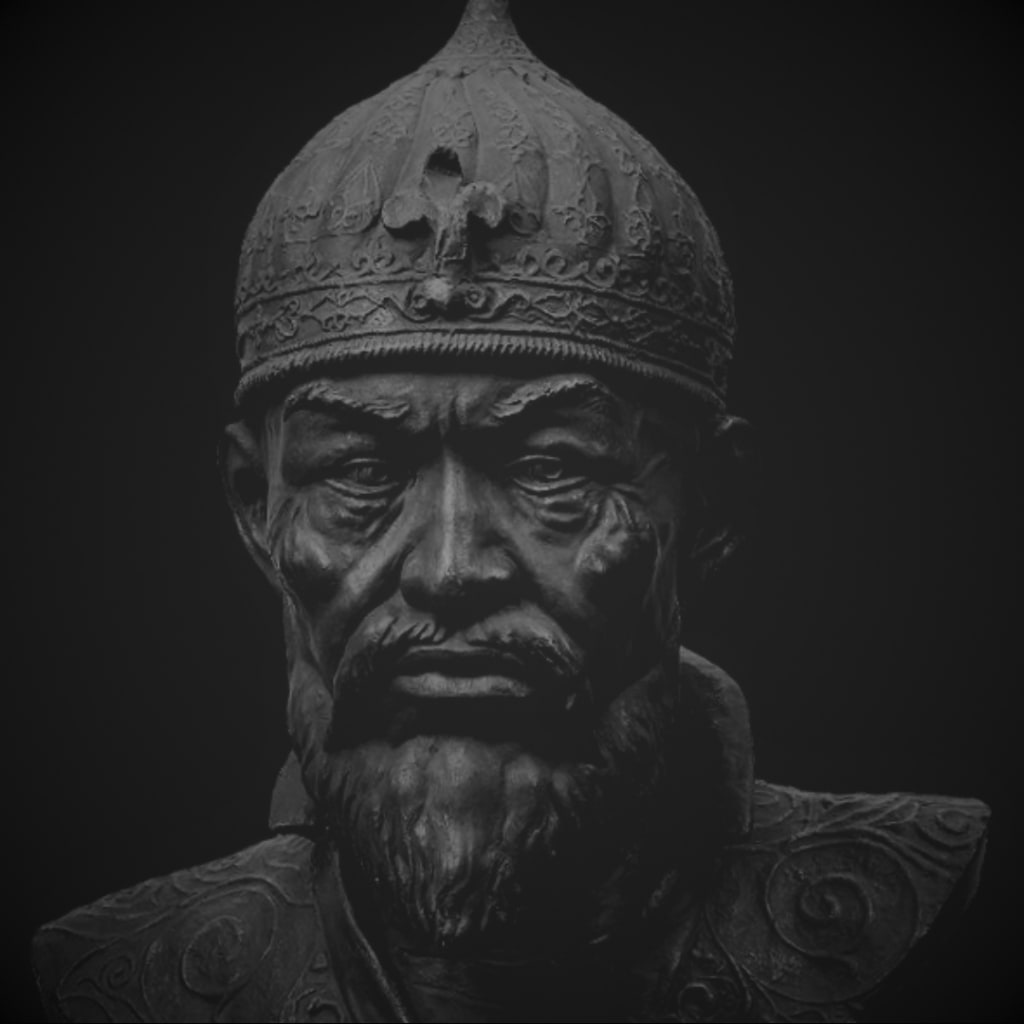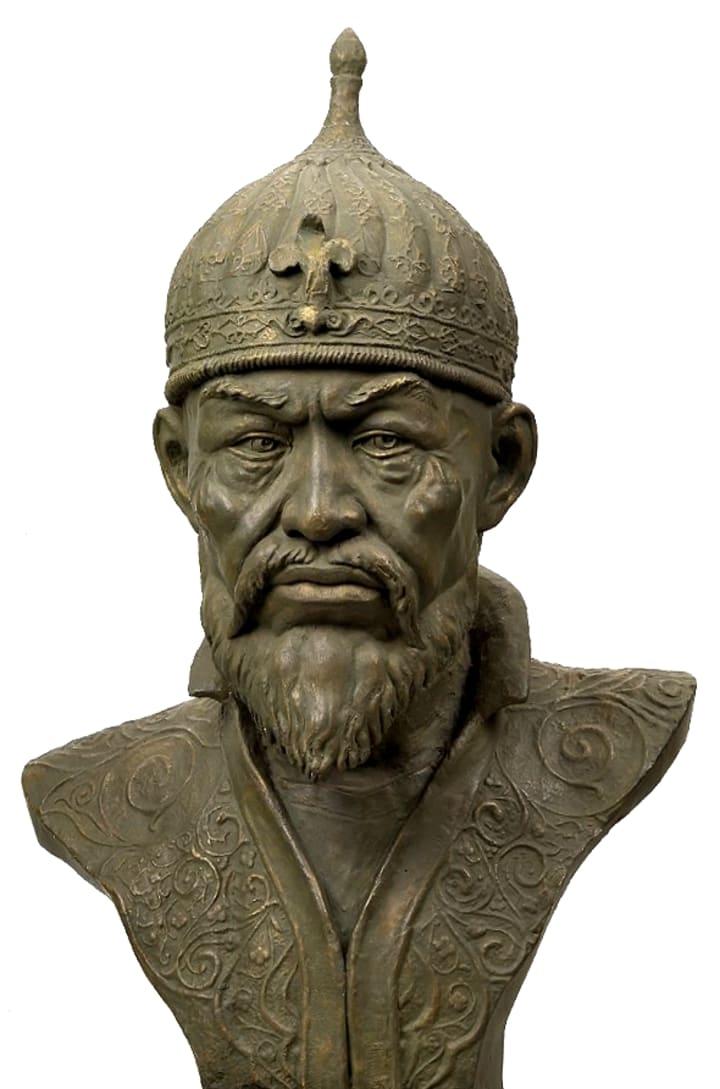Curse of Amir Timur
The true story of a tomb opened and a curse unleashed.

Old tomb opened, curse unleased. It's a tale as old as time. I'm sure you've seen it in at least one movie. (I'm looking at you, Brendan Fraser, in the classic 1999 film The Mummy.) While the notion of a curse let loose from a desiccated corpse sounds like it might be exclusive to fiction, let me assure you—it's not. There have been a few documented cases of pretty strange events that line up with curses on tombs. Let's look at one such curse with origins in the Eurasian Steppe that some say affected the outcome of World War II.
Where and What Is the Eurasian Steppe?
The Eurasian Steppe (Great Steppe, or The Steppes) is a vast stretch of rugged grassland. It's the geographical backbone of Eurasia and covers over 5,000 miles (8,000 kilometers) from Romania to China. The land has been instrumental in the migration of people and the spread of cultures and has been the path of invasions for empires throughout history.

It is a land of extremes where huge, flat, nearly treeless swathes of land experience harsh winters and relentless summers.
Archaeological evidence suggests that there were instances of cannibalism in the Eurasian Steppe during times of famine.
The environment is unforgiving, but a unique ecosystem hardy enough to survive developed, with adaptations like grasses with deep roots and animals built to withstand extreme weather.

The Steppes have been at the crossroads of civilizations for recorded history. The terrain allowed the movement of large groups of people and served as a route for invasions by the Huns and Mongols, led by Genghis Khan, and a route for all sorts of other wars, invasions, and disputes.

In addition to invasions, it's also been a trade route; the famous, ancient Silk Road wound its way through the Steppes. The Silk Road enabled peoples to exchange goods, ideas, and culture and helped contribute to the prosperity of each.
Not only have the Steppes been a path for trade and prosperity, but also for disease. It was a major transmission route for the Black Death in the 14th century. Along the old trade routes throughout the Steppes, you can find ghost cities on the Silk Road; what were once trade centers now stand as eerie ghost towns, remnants of a bygone era.
It was in this tumultuous region that Amir Timur lived and where he left a curse after his death.
Who Was Amir Timur?
Timur was born in the 1320s as a minor noble in Transoxiana, modern-day Uzbekistan, and his early life was marked by turmoil and power struggles.
Timur
Also known as Tamerlane (English), Taimur (English variant), Temur (English variant), Amir Timur (Persian/Chagatay), Sahib-i-Qiran (Persian, lit. 'Lord of the Auspicious Conjunction'), Temūr(-i) Lang (Persian, lit. 'Timur the Lame'), Aqsaq Temür (Chagatay, lit. 'Timur the Lame'), Timur the Lame (English), Temür (Chagatay, lit. 'Iron').
That's a lot of names and languages.
And I didn't even make a Timmy South Park joke.
If you noticed "the Lame" above (and "Tamerlane"!), it's because Timur sustained injuries in a battle that left him with a permanent limp. A limp that didn't stop him from leading some of the most successful military campaigns in history.
Timur somehow navigated the complex political landscape without getting assassinated and gradually rose to power. He claimed to be a descendant of Genghis Khan and used it as a critical aspect of his strategy to secure regional alliances.
Genghis Khan's Hidden Tomb
Genghis Khan once ruled over the Eurasian Steppe. He was buried somewhere in an unmarked grave, and the location was kept secret. It's one of history's greatest mysteries. Legend says the burial party killed anyone they encountered to keep the site a secret.
Timur quickly became a conqueror and founded the Timurid Empire (around modern-day Afghanistan and Iran). His military campaigns were infamous for their brutality and sheer scale. The empire he built stretched from India to Turkey and Russia to Egypt, using a combination of military might and tactical brilliance—oh, and siege engines, mountains of skulls from decapitated enemies, and a scorched earth policy that left entire regions devastated.

Despite all that, he held a lifelong profound interest in art, culture, and learning. He transformed his capital city of Samarkand into a center of Islamic culture and invited non-military people to his court, including poets, scholars, and artists. His love of artistic and intellectual pursuits helped kick off a period now called the Timurid Renaissance.
Samarkand, located in modern-day Uzbekistan, is among the oldest continuously inhabited cities in all of Central Asia. The city's architecture still shows heavy influence from the time of Timur, marked by grandiose mausoleums, mosques, and madrasas with fine details and intricate tilework.
Also, in the 1940s, a mass grave was found in Samarkand. The bodies showed signs of violent deaths, and they may have been victims of Timur's conquests.
Timur died in 1405 while on a winter campaign to conquer China. He was brought to Samarkand and placed in a tomb called Gur-e Amir (Persian for "Tomb of the King"). The tomb was built two years prior, in 1403, after Timur's grandson and heir apparent died suddenly. Timur built himself a smaller tomb farther away in Shahrisabz, but when he died, he was buried in Gur-e Amir because the passes to Shahrisabz were snowed in and untraversable. Gur-e Amir became the family crypt of the Timurid dynasty, and Timur kept a watchful eye on the family tomb from beyond the grave.
Curse of Amir Timur Unleashed
Historical rumor has it that a curse protected the tomb and that anyone who disturbed it would unleash a fearsome fate upon not only themselves but the entire region.
Who in their right mind would open up a tomb like that, knowing some ancient curse is lurking inside, just waiting to launch itself out into the world to wreak utter havoc?
So, on June 22, 1941, Soviet archaeologists opened the tomb. Inside, they found an inscription: "When I rise from the dead, the world shall tremble." Of course, the archaeologists continued and opened up Timur's casket. Inside was another inscription: "Whoever disturbs my tomb will unleash an invader more terrible than I."
Well, well, well, wouldn't you know it?
A few hours later, Hitler invaded the Soviet Union.
Good job, guys. I'm looking at you, Mikhail M. Gerasimov, Lev V. Oshanin, and V. Ia. Zezenkova. You woke up a centuries-old spirit from his slumber.
Why does no one ever respect the curses?
Anyway, Operation Barbarossa was the code name for Nazi Germany's invasion of the Soviet Union during World War II. And, to reiterate, it began hours after Timur's tomb was opened on June 22, 1941. Operation Barbarossa became the largest military operation in World War II in terms of people and casualties and stretched across the entire Eastern Front. It marked a pivotal point in the war, with Hitler breaking the non-aggression pact with Stalin in 1939. German forces rapidly advanced, gaining significant territory and severely damaging the Red Army. There were catastrophic losses on all sides and widespread suffering, and it was one of many dark chapters of World War II.
In November of 1942, Timur was reburied with Islamic ritual—just before the tide of the German invasion changed, and the Soviets claimed victory at the Battle of Stalingrad. It was a decisive turning point in World War II for the Allies.
Now, some say that the connection between Timur and the Nazi invasion/failure is just a fanciful legend. I'm not saying they're connected or that there's a provable cause/effect relationship between the two. All I'm saying is that if there's a clearly worded curse on a tomb, maybe you should stop and think twice before busting it open.
Amir Timur's Legacy
It is fascinating to reflect on where the strands of historical truth and fiction intertwine. It makes sense that Timur, with his brutal military campaigns, would end up with ominous legends surrounding his tomb. The Eurasian Steppe itself, with vast expanses and ghost cities, serves as the perfect backdrop. Stories like this serve as great reminders that some chilling stories may have roots in reality (ahem: mountains of skulls from decapitated enemies), and those figures we find in history books or online can sometimes become as legendary as any fictional character.
Relevant & Related
- Learn more about Tamerlane & History of The Timurid Empire, and The Diabolical Things That Timur Did During His Reign. Even more in Tamerlane: The Bandit who Became an Emperor.
- Like biographies? Check out Tamerlane: Sword of Islam, Conqueror of the World by Justin Marozzi.
- If you can locate a copy, there's a novel based on the real-life figure of Thomas of Lancaster, an Englishman who traveled to Timur's court: The Tartar Khan's Englishman by Gabriel Ronay.
- Want to know more about the Steppes? Try Dan Carlin's Hardcore History podcast, Episode 27: More Steppe Stories.
- More into documentaries? I've got you covered: The Entire History of Steppe Nomads & City Builders // Ancient Prehistory Documentary.
- For more articles I've written, check out Templo Mayor, Human Sacrifice, and Cihuateteo of Mexico City | Hauntings of the Forbidden City in Beijing | Ghosts of Ogrodzieniec Castle in Poland | The Jiajing Emperor | The Posthumous Execution of Oliver Cromwell | Jure Grando of Kringa, Croatia | Gilles de Rais
Lastly, I can't pass up this opportunity for a plug of two historical fiction books I enjoyed, set during World War II.
- The Huntress by Kate Quinn — This novel weaves the wartime bravery of Soviet pilot Nina Markova and the Night Witches with a post-war manhunt led by a Nazi hunter Ian Graham, while a young American, Jordan McBride, uncovers dark secrets in 1950s Boston.
- The Diamond Eye by Kate Quinn — This novel recounts the transformation of Mila Pavlichenko from a young Ukrainian mother to a legendary Soviet sniper during World War II, culminating in an unlikely friendship with Eleanor Roosevelt.
The Night Witches mentioned above were a real all-female Soviet bomber regiment during World War II. Their German name that struck fear into the hearts of Nazis was "die Nachthexen". 🤩 Also, Lyudmila Pavlichenko, dubbed "Lady Death", was a real Soviet sniper in World War II, credited with a confirmed 309 kills of enemy combatants—easily placing her in the top 5 snipers of all time. A confirmed kill means that a third party witnessed it, and the number of Nazis she killed was likely much, much higher.
~
Originally published in my weekly newsletter, Into Horror History - every week, I explore the history and lore of horror, from influential creators to obscure events. Cryptids, ghosts, folklore, books, music, movies, strange phenomena, urban legends, psychology, and creepy mysteries.
About the Creator
J.A. Hernandez
J.A. Hernandez enjoys horror, playing with cats, and hiding indoors away from the sun. Also, books. So many books—you wouldn't believe.
He runs a weekly newsletter called Into Horror History and writes fiction.
https://www.jahernandez.com






Comments
There are no comments for this story
Be the first to respond and start the conversation.